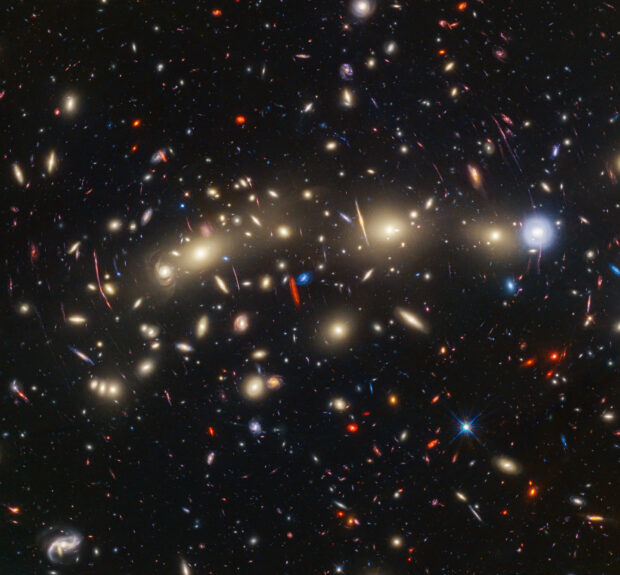Astronomy
February’s night skies host some of the most distinctive and spectacular stars, constellations and deep-sky objects, so wrap up warm and make the most of any clear nights that come around!
This year’s New Year Honours saw 4 leader from the UK space sector recognised for their work's contributions. The UK Space Agency celebrates and congratulates these space pioneers.
2024 hosts several fascinating night sky sights, from an early morning line up of the rocky planets to two partial lunar eclipses.
This month brings the solstice on 21 December marking the start of winter, and one of the most prolific meteor showers in the calendar - the Geminids.
This month brings a great chance to see Jupiter at its brightest, meteors, a host of wonderful stars and constellations, and a chance to see the Moon eclipse Venus!
October’s night skies feature a partial lunar eclipse, two meteor showers and a great opportunity to see the gas giant planets of our Solar System, Jupiter and Saturn.
With the Milky Way overhead, Saturn at its brightest, a very exciting meteor shower and the chance to see noctilucent clouds, August is the perfect month for some nights of stargazing!
July is a great month for stargazing, including seeing the Milky Way galaxy, a conjunction of the rocky inner planets of our Solar System and two meteor showers.
The summer solstice falls on 21 June, marking the start of astronomical summer. Despite the shorter nights, there are many wonderful sights to look out for this month.
May brings a meteor shower, a conjunction of the Moon with Mars and Venus, and a chance to see the core of our Milky Way Galaxy.









